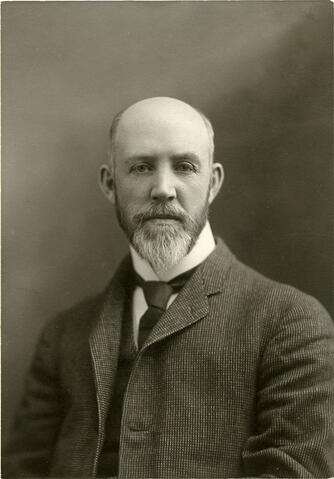
Title and statement of responsibility area
Titel
Adam Shortt - Portrait
Algemene aanduiding van het materiaal
- Graphic material
Parallelle titel
Overige titelinformatie
Title statements of responsibility
Titel aantekeningen
Beschrijvingsniveau
Stuk
archiefbewaarplaats
referentie code
Editie
Editie
Edition statement of responsibility
Class of material specific details area
Statement of scale (cartographic)
Statement of projection (cartographic)
Statement of coordinates (cartographic)
Statement of scale (architectural)
Issuing jurisdiction and denomination (philatelic)
Datering archiefvorming
Datum(s)
-
[191-?-192-?] (Vervaardig)
Fysieke beschrijving
Fysieke beschrijving
1 photograph : b&w ; 18 x 23 cm
Publisher's series area
Title proper of publisher's series
Parallel titles of publisher's series
Other title information of publisher's series
Statement of responsibility relating to publisher's series
Numbering within publisher's series
Note on publisher's series
Archivistische beschrijving
Naam van de archiefvormer
Geschiedenis beheer
Bereik en inhoud
Head and shoulders image of Adam Shortt, who donated the initial bulk of the Shortt Collection of Canadiana, which makes up the basis of the University of Saskatchewan Special Collections.
Bio/Historical Note: Adam Shortt was born 24 November 1859 in Kilworth, Ontario. He attended Queen's University with the intention of becoming a Presbyterian minister. When Shortt graduated in 1883 , he pursued graduate studies in philosophy, chemistry and botany. In 1886 Shortt married Elizabeth Smith, one of the first women to receive a medical degree in Canada. The same year he began working as a tutor for John Watson, and in 1887 was appointed a lecturer in the field of political economy at Queen's. In 1891 he was the first to be appointed the John A. Macdonald Professor of Political Science. While a lecturer at Queen's Shortt was appointed editor of The Queen's Journal. He is credited with establishing the first card catalogue at the Queen's Library. Regarded as the father of professional economics in Canada, Shortt took a historical approach as differentiated from economic theory, as he believed that the economics of nations depend on natural resources, geographic location, and specific economic attributes. Shortt went on to Glasgow University for his master's degree in political economy. Shortt was one of five men on the shortlist for the position of first president of the University of Saskatchewan. He is most well known for his research into the history of Canadian banking and for his association with the National Archives of Canada. In 1906 he was elected a fellow of the Royal Society of Canada and a commander of the Order of St Michael and St George in 1911. At the time of his death on 14 January 1931, he was a chairman of the Board of Historical Publications at the National Archives, a position he had held since 1918.
Bio/Historical Note: Special Collections at the University of Saskatchewan Library began with the purchase of the Adam Shortt collection of Canadiana in 1921. Dr. Shortt, a professor and University Librarian at Queen's University was an inveterate collector. Indeed, the collection at the University of Saskatchewan was one of his two personal collections. This collection has been augmented over time and now concentrates on western Canadian history. While it includes old and rare materials, such as 18th- and 19th-century editions of explorers' and missionaries' accounts, it also emphasizes the history of First Nations and Metis people. The library is particularly proud to own an original letter/poem written by resistance leader Louis Riel to his jailer just two weeks before he was hanged for treason.
Aantekeningen
Materiële staat
Directe bron van verwerving
Ordening
Taal van het materiaal
Schrift van het materiaal
Plaats van originelen
Beschikbaarheid in andere opslagformaten
Restrictions on access
Termen voor gebruik, reproductie en publicatie.
Photographer: Unknown
Copyright holder: Public domain
Other terms: Responsibility regarding questions of copyright that may arise in the use of any images is assumed by the researcher.

